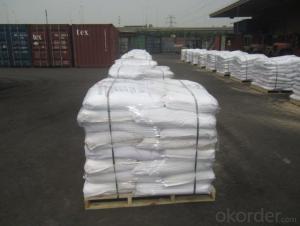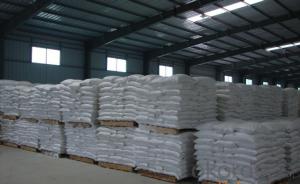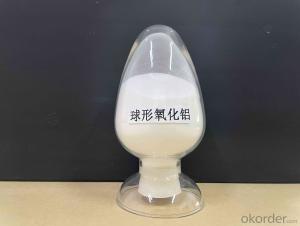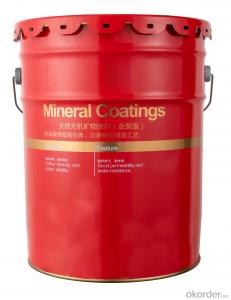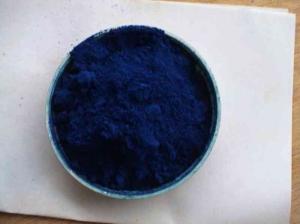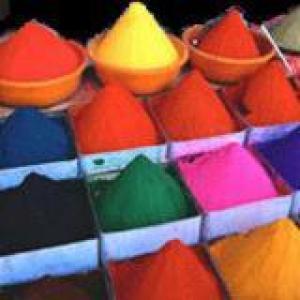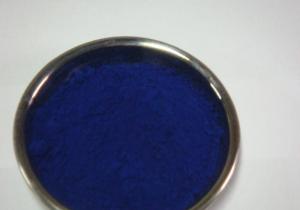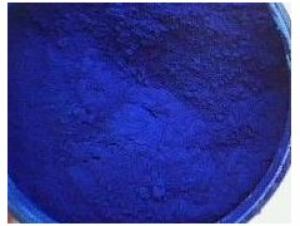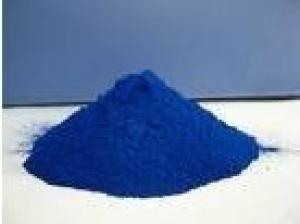Lithopone pigments B301 B311 Pigment chemical factory direct sell
- Loading Port:
- Tianjin
- Payment Terms:
- TT OR LC
- Min Order Qty:
- 20 m.t.
- Supply Capability:
- 2000 m.t./month
OKorder Service Pledge
OKorder Financial Service
You Might Also Like
Specifications of Lithopone
1.The factory direct sell
2.Free samples
3.Visit our booth for more details
Lithopone(B301 B311)
1.well-used in paint-making, printing ink, plastics, leather, PVC
2.lithopone 28-30% b311 b301
3.high quality
4.low price
Features:
1) A white pigment produced by precipitation through filtering,
heating and quenching works
2) Has mostly been replaced by titanium dioxide which is more
durable, but it is much cheaper
Applications:
1) Used as a base for lake pigment
2) Used as a inert pigment for paint, ink and cosmetics
3) A large range of applications in plastic industry
4) Used as a filler in paper, leather, and linoleum
English Name: Lithopone(B301 B311) | ||
Item | Index | |
B301 | B311 | |
In terms of total zinc sulfide and barium sulfate the sum of% (m / m) ≥ | 99 | 99 |
The total amount of zinc (in zinc sulfide)% m / m) ≥ | 28 | 30 |
Zinc Oxide% (m / m) | 0.6 | 0.3 |
105 °C Volatile% (m / m) ≤ | 0.3 | 0.3 |
Water soluble% (m / m) ≤ | 0.4 | 0.3 |
Filter material (63μm filter)% (m / m) ≤ | 0.1 | 0.1 |
Color (with standard sample) | Excellent | Excellent |
Death by degrees to take liquid water | Neutral | Neutral |
Oil Absorption g/100g | 14 | 10 |
Reducing power (with standard sample)% ≥ | 105 | 105 |
Opacity (contrast ratio) | Not lower than 5%standerd sample | Not lower than 5%standerd sample |
Properties: This product is a kind of new-style nontoxic. Green non-pollution, lithopone than traditional lithopone albedo high, hiding power, fineness and high-temperature weatherability, strong characteristic. | ||
Uses: Widely used in coating, powder, plastic, profiles, paint, rubber, paper, and leather, etc. | ||
Packing: 25 kg/50kg P.P woven bag or with the clients’ request | ||

- Q:what is the function of pigment molecules in photosynthesis?
- WELL to be exact cuvette 2: to observe the role of photosynthesis with chromatin cuvette 3: to observe the role of photosynthesis with UV rays cuvette 4: to observe the stability of the chloroplasts cuvette 5: to observe the reaction of the H2O synthesis
- Q:hi:]i need the right order to apply skin pigments...
- Pigments are usually packaged in a finely milled loose powder form. After cleansing , toning and moisturizing,let the moisturizer absorb in the skin. Apply the skin pigments using a large compact powder brush/kabuki brush in a circular motion on face neck, then apply a second layer in a downward motion. Then use Evian water Mister to set the pigment. For eye pigments, put a thin layer of skin pigment first, then apply the eye pigment using a oval shaped dome brush
- Q:I am planning on purchasing MAC, but what r the differences... thanks to all...I want to have an idea before I head to the mall.
- Pigments are really loose eye powders. For MAC, it's kind of like 'balls of sparkles' If you want really sparkly eyes, you'd probably want this. Dip your eye makeup brush in water, then in the pigment. I find this to work well, and it really compliments the product. It's best applied over a dark eyeshadow or primer. An eyeshadow is a packed together powder. (As you probably know) MAC eyeshadow comes on bright and radiant. So if you just want a simple look, this product works well. I suggest MAC - PaintPot. It's a creamy eyeshadow that is easy to blend. It's not waterproof, but it's difficult to rub off. It can act as a primer too.
- Q:what pigment are? give two example
- i need example sentences of pigment.. Thanks.. :)
- Q:Explain why plants need a variety of pigments to carry out photosynthesis?
- In photosynthesis plants make their which is a carbohydrate i.e. a compound of carbon, hydrogen and oxygen. That carbohydrate is glucose (C6H12O6). The chemical equation of photosynthesis is : 6CO2 + 12H2O = C6H12O6 + 6O2 + 6H2O Here water, carbon dioxide and light (light gives the energy to prform the reaction) helps to form chains of carbohydrate that further makes sucrose, a type of sugar, which can be utilized by plants as food.
- Q:i was thinking of this all day long and then i thought of posting this question for you to help me sort it out
- Pigments are chemicals inside living things that absorb certain types of light. In plants, the pigment chlorophyll in leaves absorbs sunlight for photosynthesis to work, where the energy comes from. Chlorophyll absorbs all light except green, which is reflected. That's why most plants are green. NOT the other war around. :) :)
- Q:How are plant pigments involved in photosynthesis?
- Plant pigments - as other pigments - interact with light to absorb only certain wavelengths. In plants the different sorts of pigments are useful to absorb available wavelengths of light and enable photosynthesis in shadow, in bright sunshine, in deep sea etc.: each pigment reacts with only a narrow range of the spectrum, there is usually a need to produce several kinds of pigments, each of a different color, to capture as much as possible of the sun's energy.
- Q:What are MAC pigments?
- its proberly a load of bullshit to make ppl to buy it
- Q:a. chlorophyll ab. chlorophyll bc. chlorophyll cd. carotenoid pigments
- Chlorophylls are greenish pigments which contain a porphyrin ring. This is a stable ring-shaped molecule around which electrons are free to migrate. Because the electrons move freely, the ring has the potential to gain or lose electrons easily, and thus the potential to provide energized electrons to other molecules. This is the fundamental process by which chlorophyll captures the energy of sunlight. There are several kinds of chlorophyll, the most important being chlorophyll a. This is the molecule which makes photosynthesis possible, by passing its energized electrons on to molecules which will manufacture sugars. All plants, algae, and cyanobacteria which photosynthesize contain chlorophyll a. A second kind of chlorophyll is chlorophyll b, which occurs only in green algae and in the plants. A third form of chlorophyll which is common is (not surprisingly) called chlorophyll c, and is found only in the photosynthetic members of the Chromista as well as the dinoflagellates. The differences between the chlorophylls of these major groups was one of the first clues that they were not as closely related as previously thought. Carotenoids are usually red, orange, or yellow pigments, and include the familiar compound carotene, which gives carrots their color. These compounds are composed of two small six-carbon rings connected by a chain of carbon atoms. As a result, they do not dissolve in water, and must be attached to membranes within the cell. Carotenoids cannot transfer sunlight energy directly to the photosynthetic pathway, but must pass their absorbed energy to chlorophyll. For this reason, they are called accessory pigments. One very visible accessory pigment is fucoxanthin the brown pigment which colors kelps and other brown algae as well as the diatoms. From this I would say the answer is c.
- Q:If you could explain it to me I would be very happy!
- Accessory pigments are light-absorbing compounds, found in photosynthetic organisms, that work in conjuction with chlorophyll a. They include other forms of this pigment, such as chlorophyll b in green algal and higher plant antennae, while other algae may contain chlorophyll c or d. In addition, there are many non-chlorophyll accessory pigments, such as carotenoids or phycobiliproteins which also absorb light and transfer that light energy to photosystem chlorophylls. Some of these accessory pigments, particularly the carotenoids, also serve to absorb and dissipate excess light energy, or work as antioxidants.
1. Manufacturer Overview |
|
|---|---|
| Location | |
| Year Established | |
| Annual Output Value | |
| Main Markets | |
| Company Certifications | |
2. Manufacturer Certificates |
|
|---|---|
| a) Certification Name | |
| Range | |
| Reference | |
| Validity Period | |
3. Manufacturer Capability |
|
|---|---|
| a)Trade Capacity | |
| Nearest Port | |
| Export Percentage | |
| No.of Employees in Trade Department | |
| Language Spoken: | |
| b)Factory Information | |
| Factory Size: | |
| No. of Production Lines | |
| Contract Manufacturing | |
| Product Price Range | |
Send your message to us
Lithopone pigments B301 B311 Pigment chemical factory direct sell
- Loading Port:
- Tianjin
- Payment Terms:
- TT OR LC
- Min Order Qty:
- 20 m.t.
- Supply Capability:
- 2000 m.t./month
OKorder Service Pledge
OKorder Financial Service
Similar products
New products
Hot products
Related keywords
